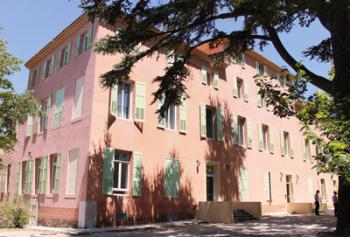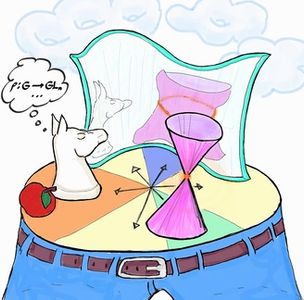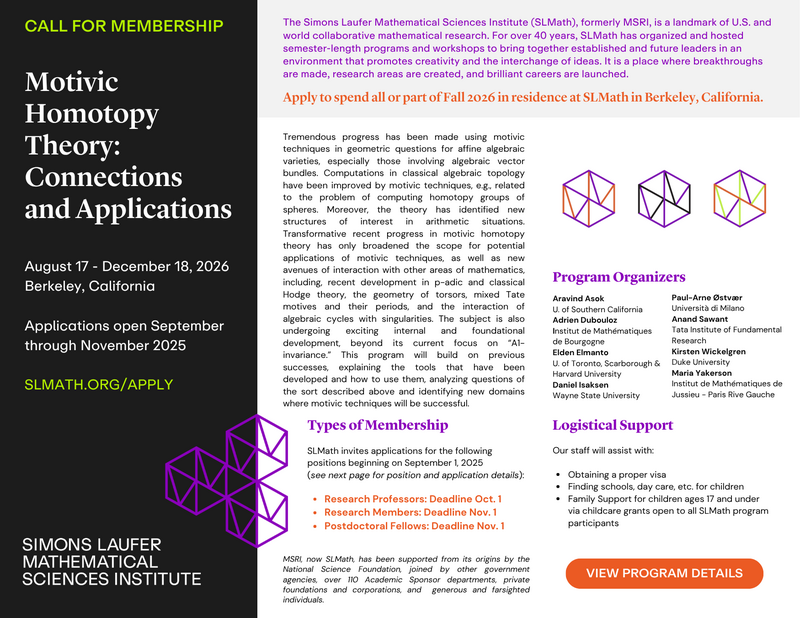Hamiltonian Systems, from Topology to Applications through Analysis
Date: 13 August - 14 December 2018
Location: MSRI
Event type: Extended Format
Organisers: Rafael de la Llave (Gatech), Albert Fathi (Gatech; ÉNS Lyon), Vadim Kaloshin (Maryland), Robert Littlejohn (UC, Berkeley), Philip Morrison (Austin), Tere M. Seara (UP Catalunya), Serge Tabachnikov (Penn State), Amie Wilkinson (Chicago)
Hamiltonian mechanics was born out of optics. Sir William Rowan Hamilton developed a theory for studying the propagation of the phase in optical systems guided by Fermat’s principle for light rays (i.e. high frequency systems). Shortly afterwards, he realized that ,based on the similarity of Fermat’s principle with the action principle, one could adapt the machinery to mechanics. Hamiltonian methods are now a central topic in dynamics and mechanics.
Many interesting PDE’s appear as a limit of mechanical systems of many small particles (e.g. water waves, fluid mechanics, the equations of plasma physics), and therefore the Hamiltonian setting is essential for studying these types of PDE’s. It is interesting to note that Maxwell spent some time developing mechanical models for his equations for the electromagnetic field.
Practical scientists appreciate the magic cancellations in the Hamiltonian setting that lead to efficient calculations.
The interdisciplinary nature of Hamiltonian systems is deeply ingrained in its history. It is remarkable that the discovery in the 1980’s of the celebrated Aubry-Mather theory (one of the most important developments in decades) was accomplished simultaneously by a Physicist Serge Aubry and a Mathematician John Mather.
Many of the people working in this area can talk to both mathematicians and physicists.
This program is designed to mix the pure mathematical viewpoint with applications in physics, space mechanics, and theoretical chemistry. The two communities will be completely integrated for synergy. Workshops are designed with the priority of fomenting interactions. We envision that during the whole semester the visitors will present tutorials aimed also to the people from different scientific backgrounds. The selection of the majority of visitors will be based on potential interactions.
Professor Albert Fathi (Gatech) has been appointed as a Clay Senior Scholar from August to December 2018 to participate in this program.
Related events
See all events
Knotted Surfaces in Four-Manifolds
Park City Mathematics Institute

p-adic Kudla Program and p-adic Automorphic Forms
CIRM

Representation Theory Under the Influence of Quantum Field Theory
Simons Laufer Mathematical Sciences Institute

Motivic Homotopy Theory: Connections and Applications
Simons Laufer Mathematical Sciences Institute